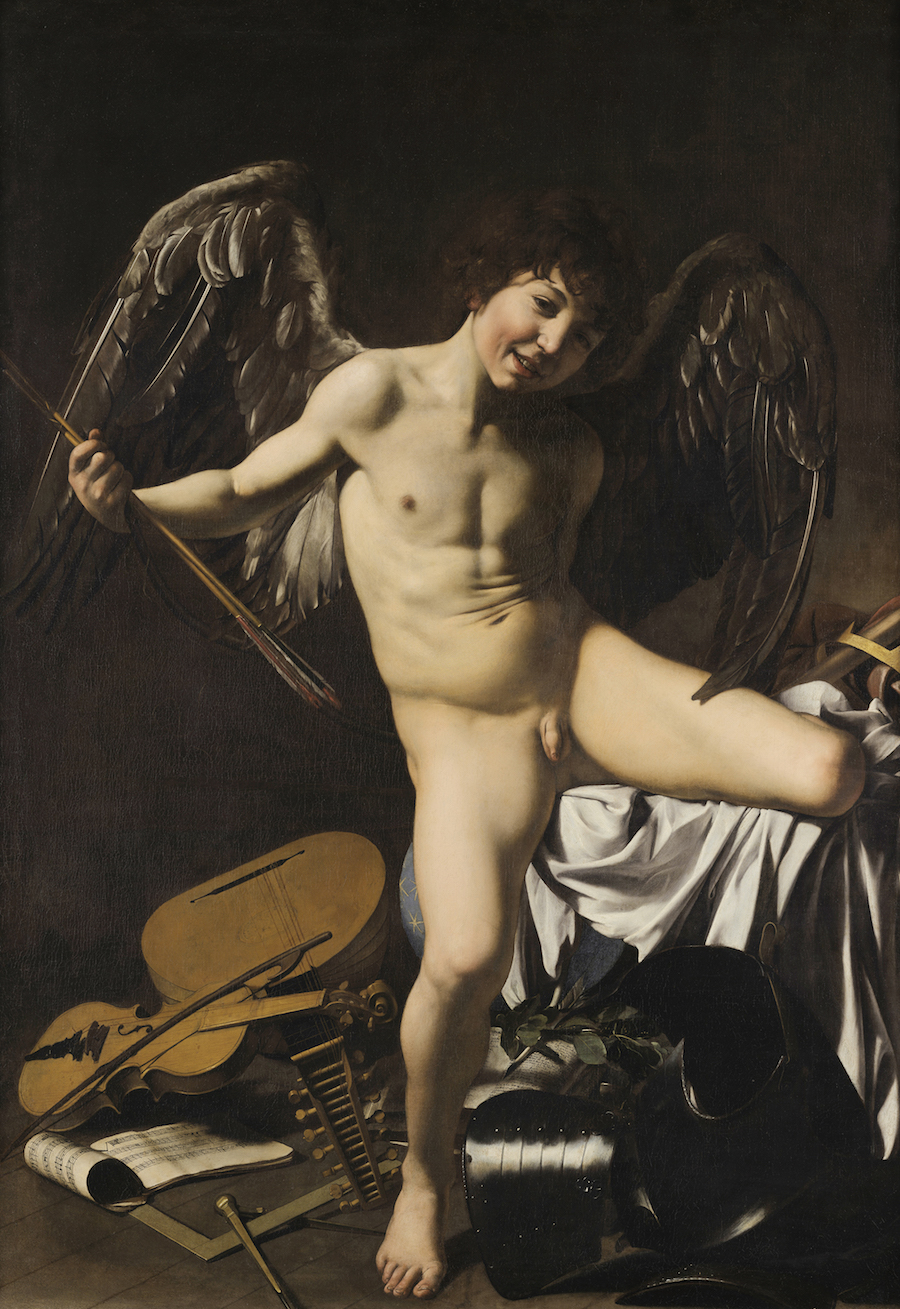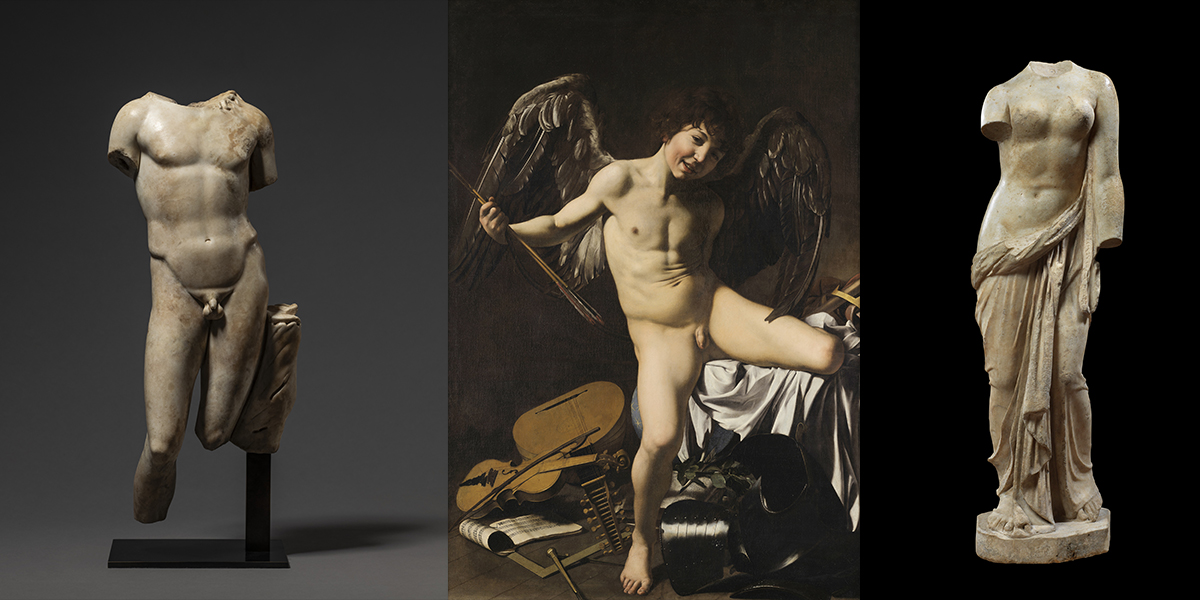For the first time on British soil, Caravaggio’s Victorious Cupid (1601-02) prepares to unsettle London audiences this November. On loan from Berlin’s Gemäldegalerie, this life-sized depiction of a winged, grinning adolescent will occupy the Wallace Collection’s galleries alongside two ancient Roman sculptures that originally shared space in Vincenzo Giustiniani’s Roman palazzo, reuniting after four centuries objects that once sparked heated debates about the purpose of art.
The painting’s arrival marks more than a prestigious loan; it offers a rare opportunity to experience Caravaggio as his first audiences did. In Giustiniani’s “great room of ancient paintings,” this subversive Cupid rubbed shoulders with thirteen other Caravaggios (including the Lute Player and that unsettling Inspiration of St Matthew), surrounded by works by Raphael and Titian. The Wallace’s exhibition design will evoke these surroundings through architectural fragments and strategic sightlines toward imagined Roman vistas—a partial resurrection of the environment where 17th-century intellectuals debated art’s highest forms.
What shocked contemporaries at the time of unveiling wasn’t merely the boy’s nudity (though the full-frontal presentation broke conventions), but how Caravaggio weaponised realism. This wasn’t some idealised Eros, but a particular Roman youth – all crooked teeth and dimpled flesh – who seems moments away from stepping into the viewer’s space. The scattered attributes of culture and power at his feet (armour, musical instruments, a crown) become playthings rather than trophies. Even the celestial globe behind him reads less as a symbolic backdrop than as a cheeky visual pun – this Cupid conquers not through divine might, but a sheer seductive presence.

The exhibition’s innovative pairing with two Roman sculptures invites visitors to relive the paragone debates that obsessed Giustiniani’s circle. Can painting capture texture like sculpture? Does three-dimensional form trump illusionistic depth? Caravaggio’s answer – his virtuosic rendering of feather, flesh, and marble in oil – becomes a silent participant in these centuries-old arguments.
Wallace Collection director Xavier Bray notes how the painting encapsulates Caravaggio’s genius: “That tension between sacred allusion and profane immediacy, between theatrical lighting and psychological realism – it’s all here.” Indeed, Victorious Cupid arrived at a pivotal moment, painted just before the artist’s exile for murder in 1606. There’s a defiant energy to the work, as if Caravaggio, sensing his world collapsing, decided to leave behind the ultimate testament to art’s power to disrupt.
The free display (running through April 2026) represents a coup for the Wallace, whose own collection of European masterpieces will engage in quiet dialogue with this disruptive visitor. Visitors might spot echoes of Cupid’s smirk in Frans Hals’ portraits or trace Caravaggio’s chiaroscuro legacy through the Wallace’s Spanish paintings.
Practicalities underscore the exhibition’s significance: the Gemäldegalerie rarely parts with this work, and its journey required meticulous climate-controlled transport. That such effort was expended for a three-month display speaks to Victorious Cupid’s enduring capacity to provoke, not through shock tactics, but by reminding us that great art retains its power to unsettle across centuries.
Caravaggio (Michelangelo Merisi) Cupid as Victor, 1601/02 Photo credits: Gemäldegalerie, Staatliche Museen zu Berlin / Image by Google; Public Domain Mark 1.0
Caravaggio’s Cupid runs at the Wallace Collection from 26 November 2025 to 12 April 2026. Admission free.

